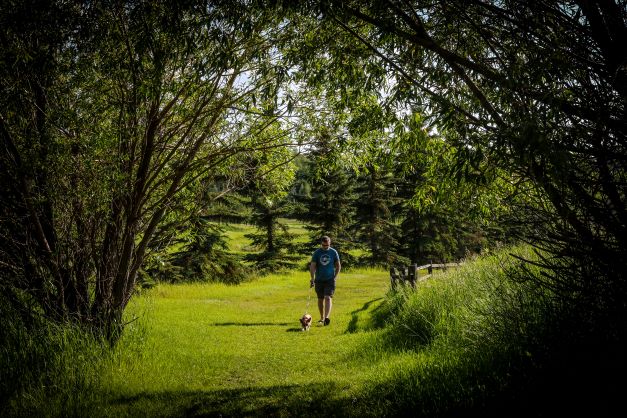Indigenous peoples and communities uniquely experience the local impacts of climate change. Knowledge systems, economies, identities, and cultures closely connected to lands and waters are being impacted by the changing climate. Responding to these challenges requires context-specific and community-driven solutions.
This is one reason that, today, the Action Centre is releasing a new Indigenous Climate Resilience Resource Hub.
We often see that finding the right resource or connecting with the right organization is the spark that starts a community building its capacity for climate adaptation. The resource hub can help light this spark more frequently.
It provides an overview of Indigenous climate resilience, bringing together an up-to-date listing of climate action initiatives and resources (both adaptation and mitigation) from across Alberta and extending to include relevant national organizations.
Now, a municipality or Indigenous community looking to better understand Indigenous climate resilience can quickly find organizations, funding opportunities, case studies, reports, interactive maps, webinars and more.
Spotlight: Centre for Indigenous Environmental Resources
In developing the Indigenous Climate Resilience Resource Hub, the Action Centre intends to put the spotlight right where it belongs, on Indigenous-directed organizations like the Centre for Indigenous Environmental Resources (CIER).
This Indigenous-directed non-profit created a valuable resource, that is highlighted in the hub: the Indigenous Climate Change Adaptation Planning Toolkit. This series of six guidebooks supports Indigenous communities in all stages of climate adaptation, from planning to implementation and monitoring. The toolkit also includes two Climate Change Language Glossaries, which frame climate impacts through the lens of local languages and worldviews.
Another resource featured in the hub is CIER’s Collaborative Leadership Initiative. An example of reconciliation-in-action in Manitoba, the Collaborative Leadership Initiative is a process through which Indigenous and municipal elected leaders build relationships and find solutions to shared impacts on waters.
Why the resource hub?
Recognizing how Indigenous peoples have always adapted to environmental change through a network of social and cultural systems, CIER partners with Indigenous communities to respond and adapt to environmental challenges through community-led initiatives.
This same spirit informs the objective of the Indigenous Climate Resilience Resource Hub: to promote knowledge sharing, conversation and learning around climate adaptation and resilience within and among communities, including municipalities and Indigenous communities.
As expressed by Merrell-Ann Phare, CIER Executive Director: “We need to work through the process of reconciliation and address our massive interracial and intergenerational legacy to deal with climate change, poverty, and other environmental issues. We need to restore our relationships with the earth the same time as we build relationships with each other. This is the only way to a sustainable future.”
If you are looking to start your community down that sustainable journey, access the resource hub to find case studies of Indigenous climate leadership, and connect with resources and organizations that can start conversations around municipal-Indigenous relations in the context of climate adaptation.
More about Centre for Indigenous Environmental Resources
What is CIER’s vision or mandate?
The Centre for Indigenous Environmental Resources (CIER) supports Indigenous people and communities to be leaders of positive environmental change, using the best of Western and Indigenous knowledge to create a world that is in balance and supports the well-being of all living things.
What does your organization do, in the context of Indigenous-led climate adaptation and resilience?
CIER is Canada’s first Indigenous-directed environmental non-profit charitable organization and was founded in 1995 by 10 First Nation Chiefs from across Canada. They determined the need to build capacity within Indigenous Communities so they could manage their environmental challenges by creating their own institutions and partner with governments and other organizations. CIER supports Indigenous peoples in building sustainable communities and protects lands, waters and all living things. Since 1995 CIER has worked on 450 projects with over 300 Indigenous nations across Canada while also reaching into the United States.
Why is this work important?
We work with Indigenous communities to build environmental capacity. CIER educates, conducts research, and builds skills to assist Indigenous communities in taking action to solve the environmental problems affecting their lands and waters. We learn with, teach, and connect Indigenous communities and organizations with the resources they need to achieve their goals.
We encourage everybody to check out our website to see the great work CIER is doing at yourcier.org
Our thanks and acknowledgement to the Centre for Indigenous Environmental Resources for their contributions to this blog post.

Andrea Miller
Project Assistant
Via an internship position through the Adaptation Resilience Training program, Andrea supports communities through activities and services offered through the Climate Resilience Capacity Building Program.

You must be logged in to post a comment.